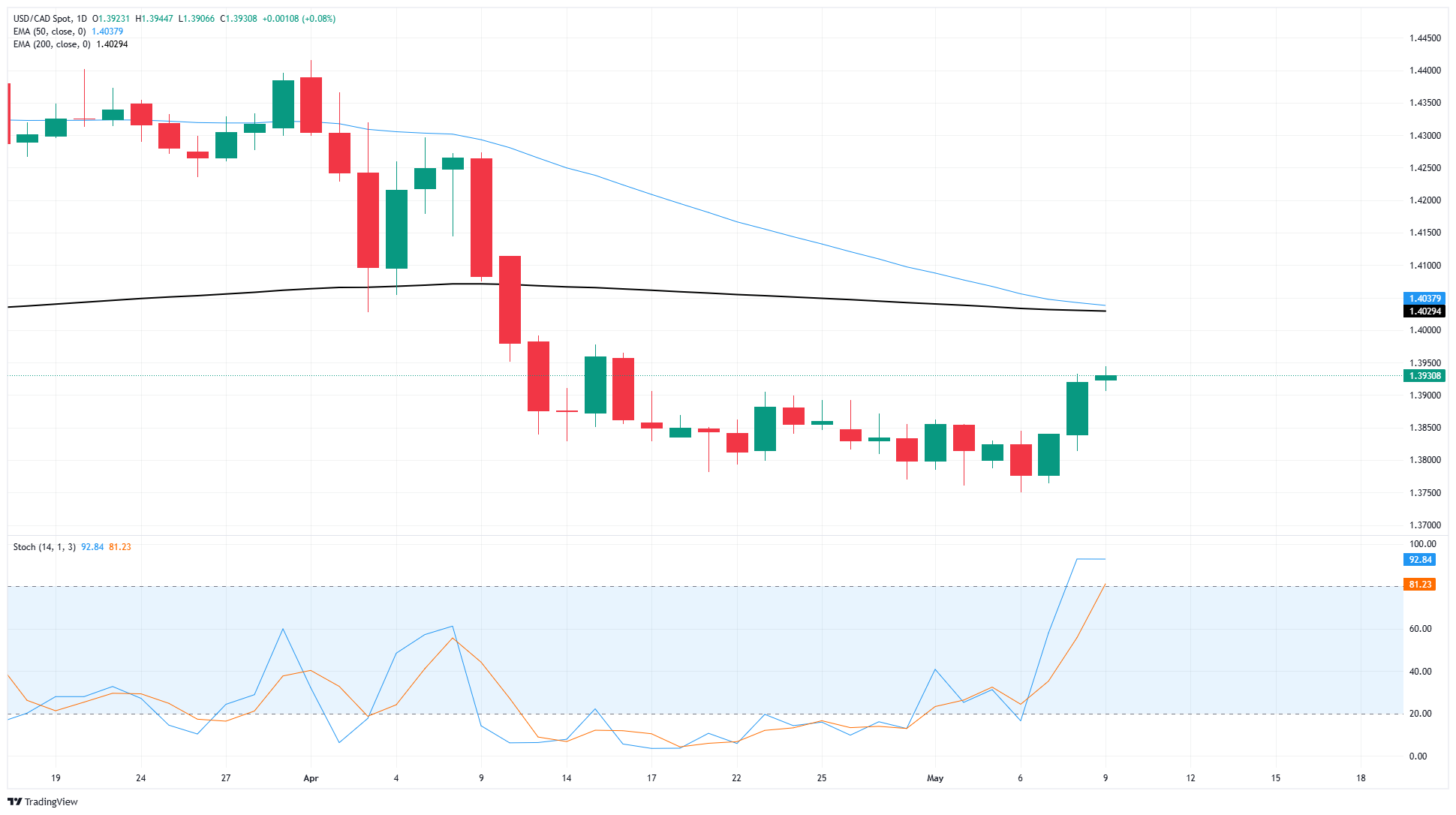Canadian Dollar flatlines on Friday as markets look elsewhere
- The Canadian Dollar treaded water to wrap up the trading week.
- Canadian labor and wage data barely moved the needle as investors focus on trade.
- US-China preliminary trade talks over the weekend will set the tone for next week.
The Canadian Dollar (CAD) flattened on Friday, sticking close to 1.3900 against the US Dollar (USD) as Loonie markets struggle to find a reason to move too far in either direction. Market sentiment is being entirely driven by upcoming trade talks between the US and China that have been set to begin in Switzerland this weekend.
Canadian labor and wages data came in mostly as expected on Friday. Canadian wage growth remains steady, and the Canadian economy added a few more jobs than expected in April. However, the Canadian Unemployment Rate ticked slightly higher, offsetting any upside from better-than-expected hiring.
Daily digest market movers: Canadian Dollar market moves very little as US trade dominates
- The Canadian Dollar eased lower against the Greenback this week, pushing USD/CAD back above 1.3900 before stalling out on Friday.
- Canadian Average Hourly Wages held steady at 3.5% YoY through April.
- Canadian Net Change in Employment beat forecasts in April, adding a net 7.4K new positions versus the forecast 2.5K. However, the figure still failed to claw back March’s steep decline of 32.6K.
- The Canadian Unemployment Rate also ticked higher in April, rising to 6.9% from 6.7%. Median market forecasts expected a rise to 6.8%.
- Coming up next week: Canadian economic data takes a backseat once again as US inflation data becomes the focus.
Canadian Dollar price forecast
A fresh bout of Loonie weakness this week kicked USD/CAD back into the high end, snapping a multi-week consolidation period and pushing bids back above 1.3900. The pair is now treading water near 1.3930, but continued bullish momentum will depend entirely on macroeconomic factors as markets wheel around ongoing trade tensions between the US and the rest of the world.
USD/CAD daily chart

Canadian Dollar FAQs
The key factors driving the Canadian Dollar (CAD) are the level of interest rates set by the Bank of Canada (BoC), the price of Oil, Canada’s largest export, the health of its economy, inflation and the Trade Balance, which is the difference between the value of Canada’s exports versus its imports. Other factors include market sentiment – whether investors are taking on more risky assets (risk-on) or seeking safe-havens (risk-off) – with risk-on being CAD-positive. As its largest trading partner, the health of the US economy is also a key factor influencing the Canadian Dollar.
The Bank of Canada (BoC) has a significant influence on the Canadian Dollar by setting the level of interest rates that banks can lend to one another. This influences the level of interest rates for everyone. The main goal of the BoC is to maintain inflation at 1-3% by adjusting interest rates up or down. Relatively higher interest rates tend to be positive for the CAD. The Bank of Canada can also use quantitative easing and tightening to influence credit conditions, with the former CAD-negative and the latter CAD-positive.
The price of Oil is a key factor impacting the value of the Canadian Dollar. Petroleum is Canada’s biggest export, so Oil price tends to have an immediate impact on the CAD value. Generally, if Oil price rises CAD also goes up, as aggregate demand for the currency increases. The opposite is the case if the price of Oil falls. Higher Oil prices also tend to result in a greater likelihood of a positive Trade Balance, which is also supportive of the CAD.
While inflation had always traditionally been thought of as a negative factor for a currency since it lowers the value of money, the opposite has actually been the case in modern times with the relaxation of cross-border capital controls. Higher inflation tends to lead central banks to put up interest rates which attracts more capital inflows from global investors seeking a lucrative place to keep their money. This increases demand for the local currency, which in Canada’s case is the Canadian Dollar.
Macroeconomic data releases gauge the health of the economy and can have an impact on the Canadian Dollar. Indicators such as GDP, Manufacturing and Services PMIs, employment, and consumer sentiment surveys can all influence the direction of the CAD. A strong economy is good for the Canadian Dollar. Not only does it attract more foreign investment but it may encourage the Bank of Canada to put up interest rates, leading to a stronger currency. If economic data is weak, however, the CAD is likely to fall.
